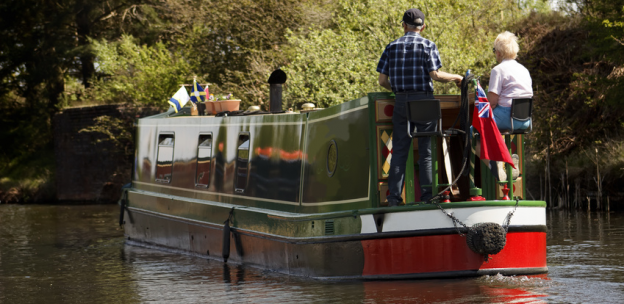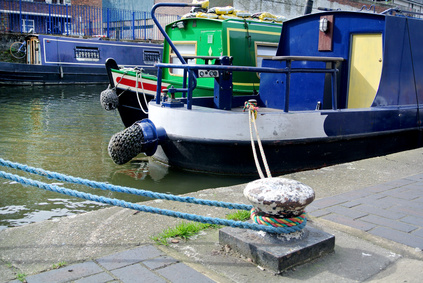If you wish to use any of the inland waterways in the mainland United Kingdom, then it is important that you know about the main organisations that oversee waterways operations in the UK. The Canals and Rivers Trust and the Scottish Waterways Trust are two of the current leading organisations that help to ensure that people can make the most out of the canals and rivers. Both of these organisations were devolved from The Waterways Trust in 2012.
The Waterways Trust
The Waterways Trust was originally established in 1999 as a registered charity that aimed to support the value and enjoyment of the British waterway network across Scotland, Wales and England. It served to act as a charitable arm for British Waterways.
As well as running various awards and grant-making schemes to support local waterways, The Waterways Trust also helped to operate the National Waterways Museum at Ellesmere Port and other waterways museums around the country. In 2012, The Waterways Trust was merged with the Canals and Rivers Trust in England and Wales. Operations continued in Scotland, with this part of the organisation being renamed as the Scottish Waterways Trust.
Canals and Rivers Trust
The Canals and Rivers Trust was formed in response to calls for waterways users to have an increased say in the way that British waterways were governed and run. Government funding for maintaining rivers and canals was cut in the midst of the global financial crisis and many waterways users were concerned about how the budget was being spent. It was decided that British Waterways should inherit the running of all inland waterways in England and Wales, and that the trust should be given charitable status to help to improve funding and operations. British Waterways continued operating in Scotland under the trading name of Scottish Canals.
The trust is run by a council of 35 members. The current member list is made up of a mixture of nominated and elected individuals. There is also an unpaid board of trustees who are legally responsible for ensuring that the Trust continues to work towards its stated aims. Operations are further devolved into 11 regional offices, namely; East Midlands, Kennet & Avon, London, Manchester & Pennines, North East, North West, North Wales and Borders, South East, South Wales and Sever, and the West Midlands.
The Canal and River Trust is currently in receipt of a multimillion pound per year grant from the Department for the Environment, Food and Rural Affairs. It also secures additional income from utilities companies that rely on the waterways network to operate successfully. Rental incomes from riverside properties, as well as mooring and passage fees from boat users also contribute towards the overall total income of the Trust. The Trust also accepts donation from people who enjoy the canals and rivers of the UK and want to support their maintenance and development. High profile charity supporters include HRH The Prince of Wales.
The Canals and River Trust is committed to developing the past and the future of England and Wales’ waterways, so that they can continue to be enjoyed by everyone across the country. For example, many of those who use the canals in their own towns do not actually understand the historical significance of the structures. The Trust campaigns to promote an understanding of the roles that canals played in the industrial heritage of the United Kingdom.
In addition to developing the human use of our waterways, the Trust is keen to protect the native wildlife which also enjoys the water and the surrounding riverbanks. One of the most prominent nature campaigns run by the Canal and River Trust is the campaign to keep ducks (and other water birds) healthy. Feeding the ducks is a very popular pastime in the UK; however it is one which is actually causing a lot of damage to our wildlife. White bread is very bad for ducks and can cause them to suffer from a wide range of different health issues. The pastime is also changing the behavioural patterns of animals, which have started to see humans as a vital source of food. Although the Trust does not want to completely stop people from feeding the ducks, it is promoting seeds and feeds which do not pose serious health risks. In some popular areas, the Trust has created feeding zones where people can buy special foods to feed to the birds.
Scottish Waterways Trust
The Scottish Waterways Trust became an independent charity in 2012 when the English and Welsh branches merged with the newly formed Canal and River Trust. Like its counterpart, the Scottish Waterways Trust also has HRH The Prince of Wales as its patron, however; the Scottish Waterways Trust is forced to rely more heavily on funding from donations.
The Scottish Waterways Trust has invested a lot of its resources into promoting waterways to young Scottish people, so that they can develop a full understanding of their importance from a young age. A “Canal School” is operated to allow visiting primary-aged children to get a hands-on education centred around the importance and history of Scottish waterways. In one of the organisation’s pioneering projects, known as Canal College, people aged 16 – 30 are given skills and employability training to help to improve their prospects for the future. Although the lessons and exercises are based around outdoors heritage, the skills which are developed are transferable one, so that they can be used anywhere in the world of work.

 Mooring
Mooring